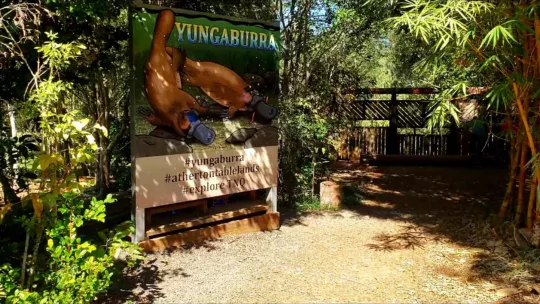When it comes to unique things to do in the Atherton Tablelands, one experience that stands out is visiting the Platypus Viewing Area in Yungaburra, Australia. Our family recently had the pleasure of visiting this on our road-trip through Atherton Tablelands, and we cannot wait to share our experiences you. We didn’t plan this as an official stop on this road trip but when we happened to see a roadside sign “Platypus Viewing”… What?! we made a quick u-turn and pulled into the small parking lot next to the Yungaburra sign.
An estimated 90 percent of Australians have not seen the evasive platypus. In Atherton Tablelands, with patience and luck, you get an experience most do not have. The Yungaburra Tourism and Information Center updates its board daily with platypus sightings. The viewing platform near Peterson Creek gives a chance to catch a glimpse.
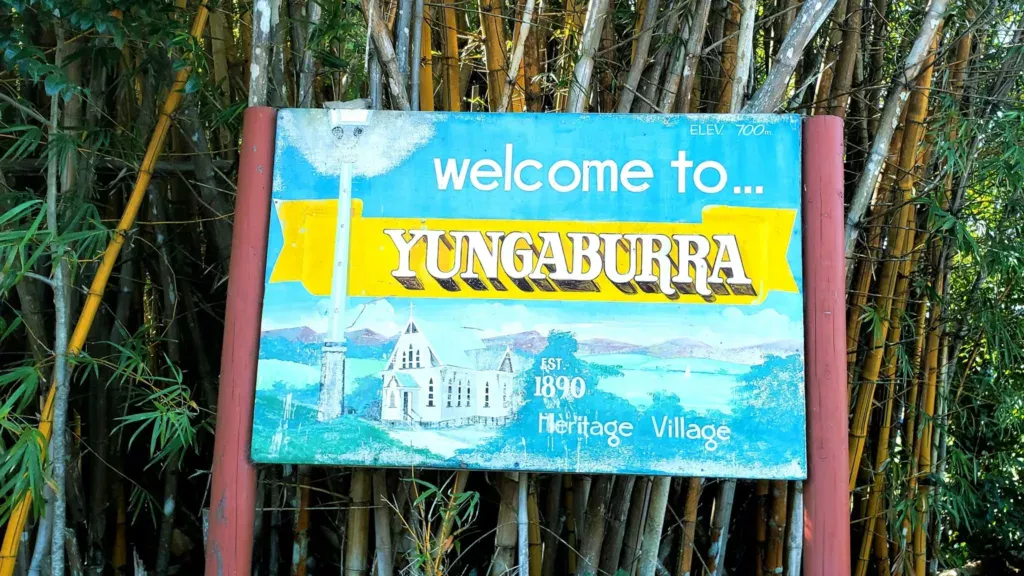
Witnessing Platypus in their Habitat
One of the highlights of visiting Yungaburra is the opportunity to witness the enigmatic platypus in their natural habitat. The Platypus Viewing Area, nestled on the shores of Peterson Creek, provides a unique vantage point to observe these elusive creatures in action. As you quietly observe from the viewing platforms, you might catch a glimpse of these extraordinary animals as they play, swim, and forage for food.
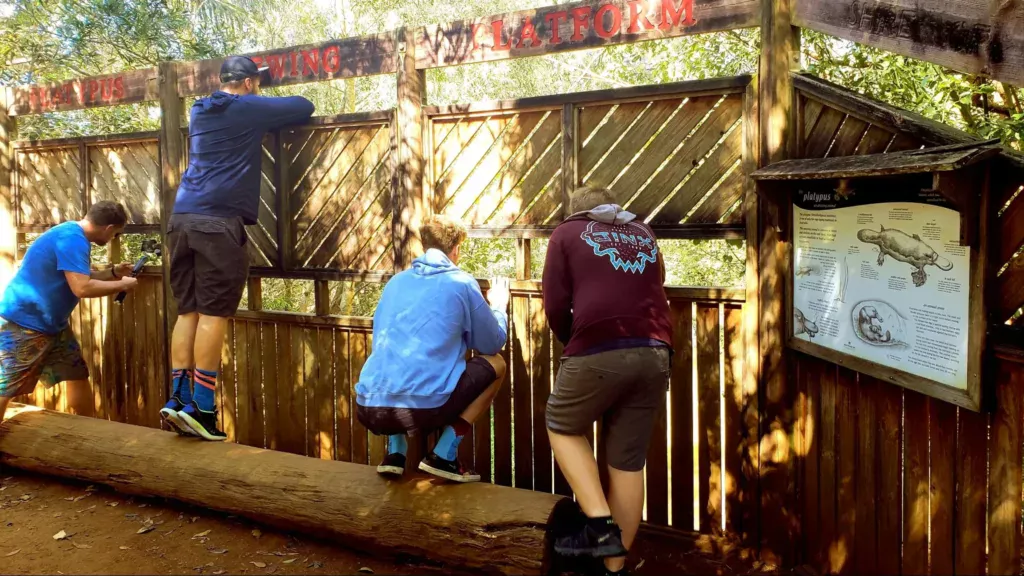
After taking a few photos in cutouts depicting platypuses, we eagerly approached the specially constructed viewing platform to see if we could spot real ones. We were also on the lookout for turtles and snakes.
Discovering the Platypus
The platypus, often referred to as nature’s wonder, is a remarkable creature with a fascinating evolutionary history. With its duck-like bill, webbed feet, and beaver-like tail, it defies conventional categorization. At the Platypus Viewing Area, you can learn about the biology, behavior, and conservation efforts surrounding these incredible creatures through informative displays and signage.
There were posted signs printed with information about these creatures. Female platypuses eat 1/3 of their body weight, lay eggs, and express milk through their pores. The male platypuses have a venomous spur on their hind foot that is strong enough to kill small animals. The venom only brings pain to humans that can last a few weeks. Their double fur coat gives them the needed protection from weather and elements. The average lifespan in the wild is 12 years.
We expected to see multiple platypuses swimming and playing on the river bank from the platform, but we didn’t.
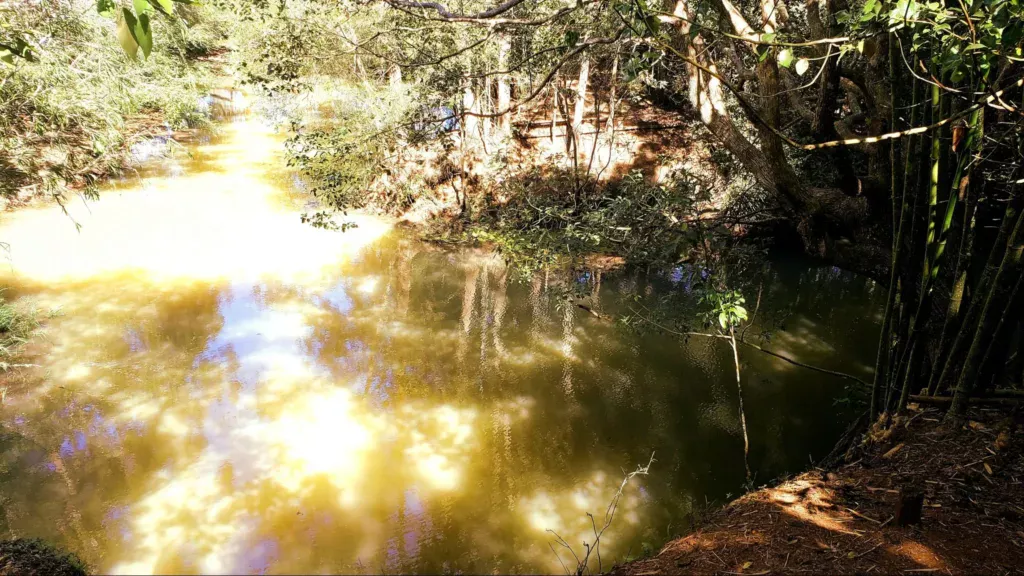
After a few minutes at the platform, we began to explore the area, hoping to see if the platypus were hanging out somewhere nearby.
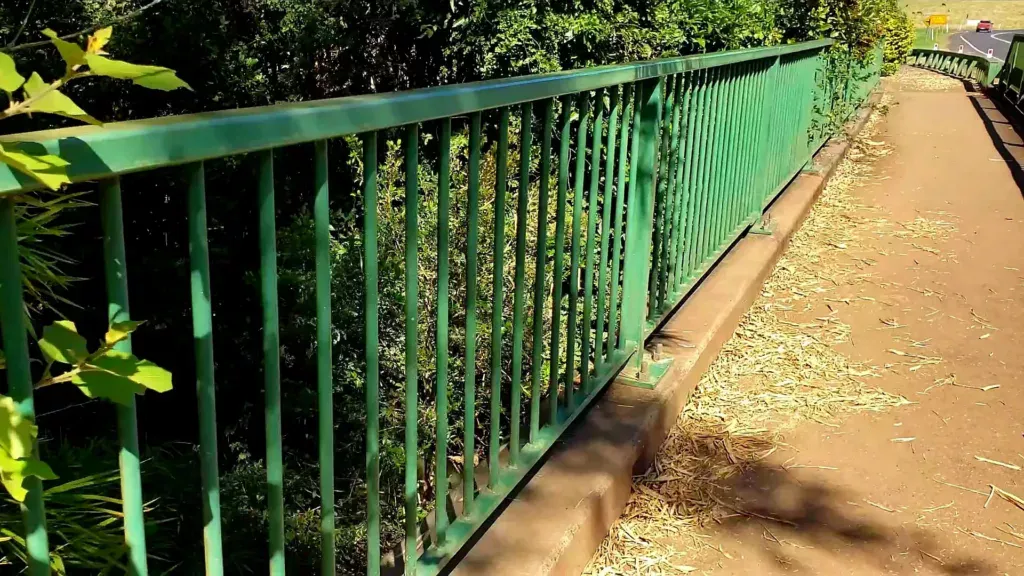
After crossing over the bridge, we encountered a nice couple who informed us a platypus playfully swimming underneath the bridge. We hurried down the path to find several people standing still and quietly taking pictures. We quickly took on the same quiet demeanor as if we were in the halls of a great library.
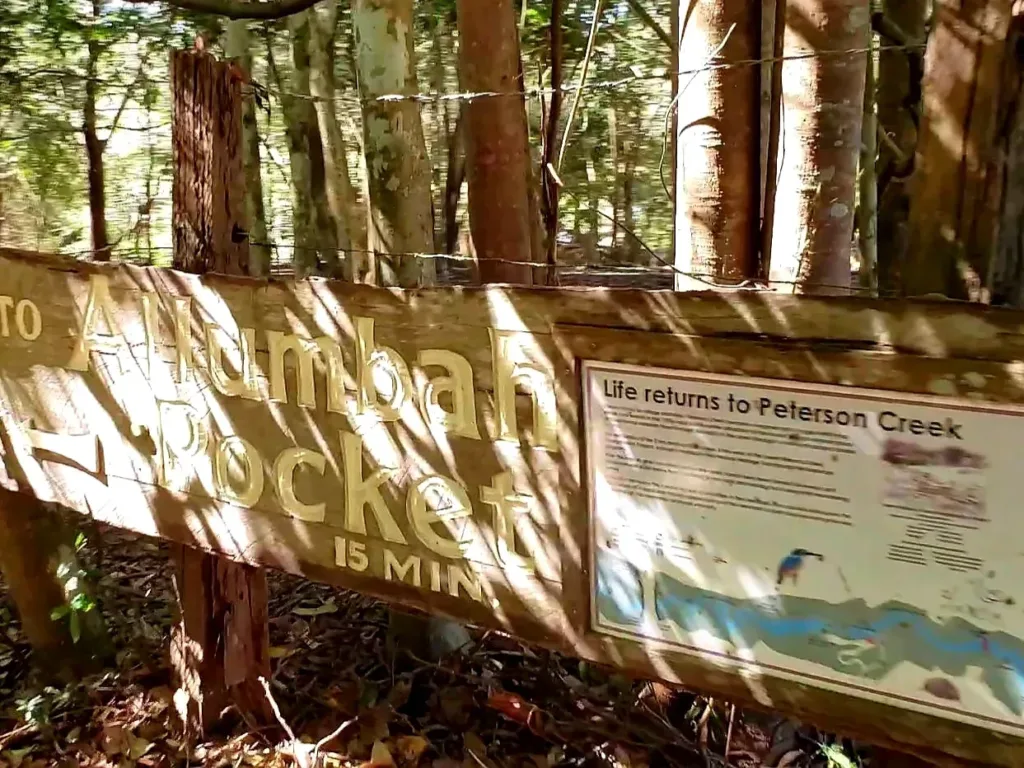
Some say the best viewing times are at dawn and dusk; others say they are nocturnal. It turns out they are active and playful throughout the day. We arrived around 10 am and were fortunate to spot one.
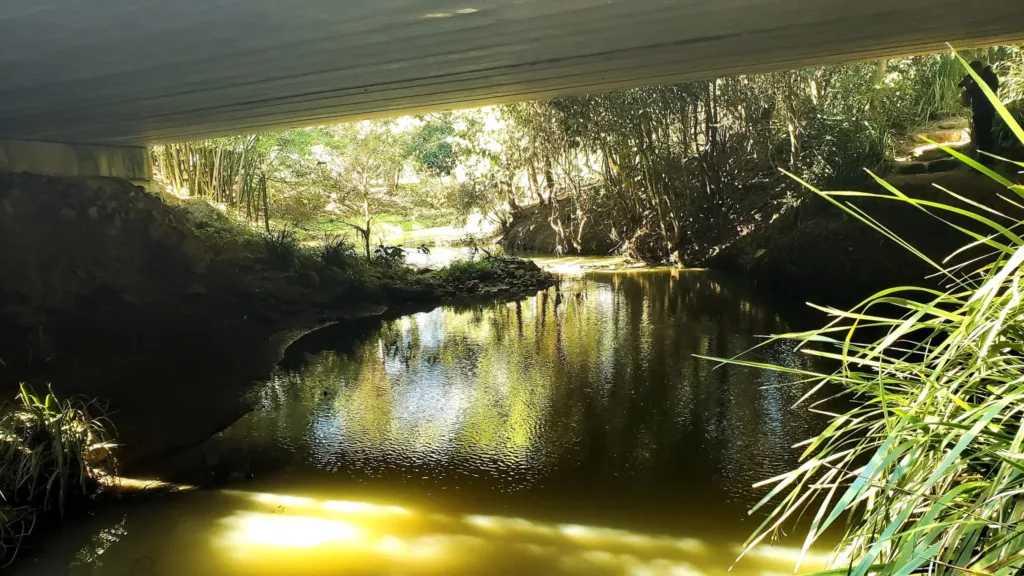
Under the bridge, we finally were able to see a platypus busy hunting for food. When the platypi swim underwater, they shut their eyes, ears, and noses while scavenging. They use passive electrolocation built into their bills to hunt. Platypuses search for worms, insects, and shrimp to fill their gullet. They do not have teeth for chewing. Instead, they cleverly fill their cheeks with gravel, grinding the gravel and food together to break it down.
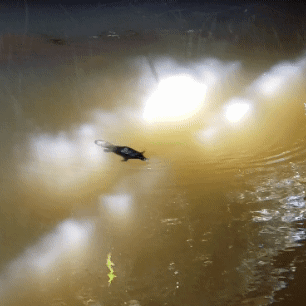
The platypus has excellent hearing, so stay very quiet and move slowly, or you will scare them away. Since platypi spend a lot of time in the water, make sure you visit when it is not raining for better water clarity. Not only will this help you see the elusive platypuses, but it will also help preserve their habitat.
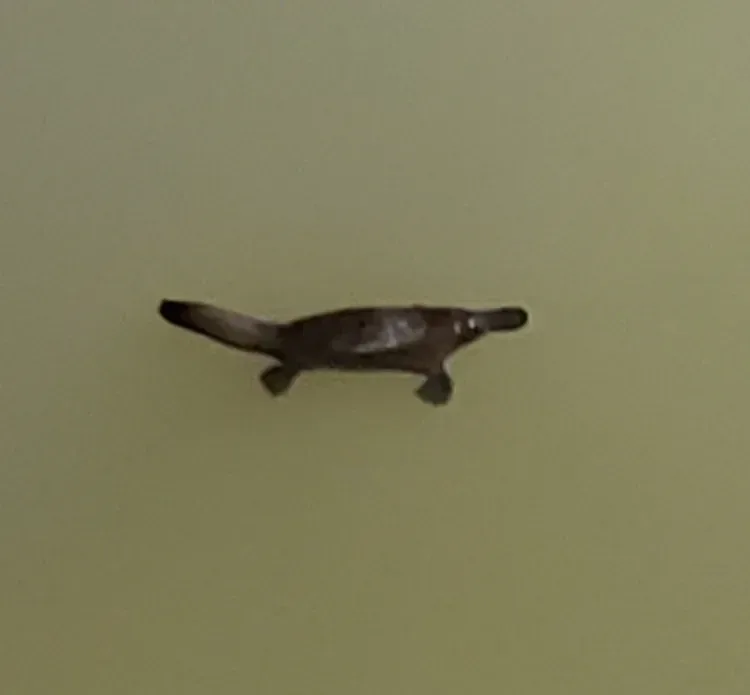
Platypi have long, thick tails that store fat and are used by female platypus to hold eggs against their warm bodies. The average female platypus lays 2-4 eggs, incubating them for 2 weeks before they hatch.
Platypi have retractable webbing in their front paws, which make them excellent swimmers. They use their experience in the water to retreat from predators and hunt for food. On land, the webbing pulls back to expose claws on their short legs. Walking on land is hard work for platypi, so it’s no wonder they prefer the water.
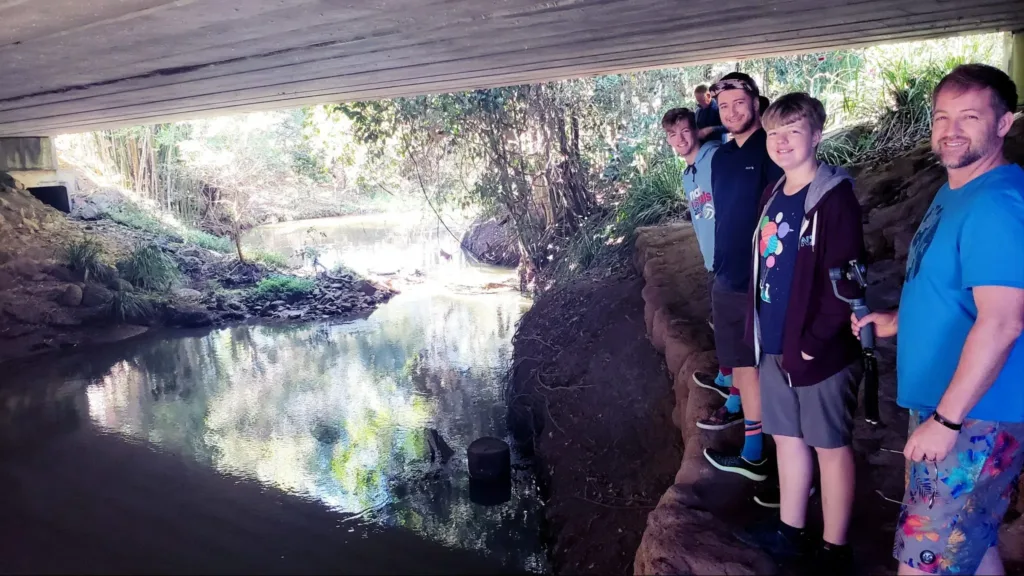
There are a few places in Queensland where you can see Platypus. At Tarzali Lake, the Australia Platypus Park offers guided tours for a small fee. Also, some wilderness lodges in Atherton Tablelands offer viewing areas to watch for the platypus.
It was so cool getting to spend time watching a platypus in its natural environment.
Tips:
- Park next to viewing signs.
- Follow the trail over the bridge for more platypus viewing in Peterson Creek.
- Watch the water for bubbles and ripples.
- Move slowly and stay quiet.
Tips for an Unforgettable Experience
To make the most of your visit to the Platypus Viewing Area, here are some helpful tips:
- Time Your Visit: Platypus are most active during the early morning and late afternoon, so plan your visit accordingly for the best chance of spotting them.
- Stay Quiet and Patient: The key to observing these shy creatures is to remain still, quiet, and patient.
- Don’t just stay at the viewing platform: while we were visiting, we didn’t see any platypus at the official viewing platform. We had to walk down the trail and under the bridge.
- Respect the Wildlife: While it’s exciting to witness the platypus, it’s important to remember that they are wild animals. Maintain a safe distance and avoid disturbing their habitat.
Visiting the Platypus Viewing Area in Yungaburra is an experience that will leave a lasting impression on your family. The opportunity to witness these elusive creatures in their natural habitat is a true privilege. As you immerse yourself in the tranquil beauty of Yungaburra and witness the enigmatic platypus, you’ll gain a deeper appreciation for the wonders of nature and the need to protect and preserve our unique ecosystems.
